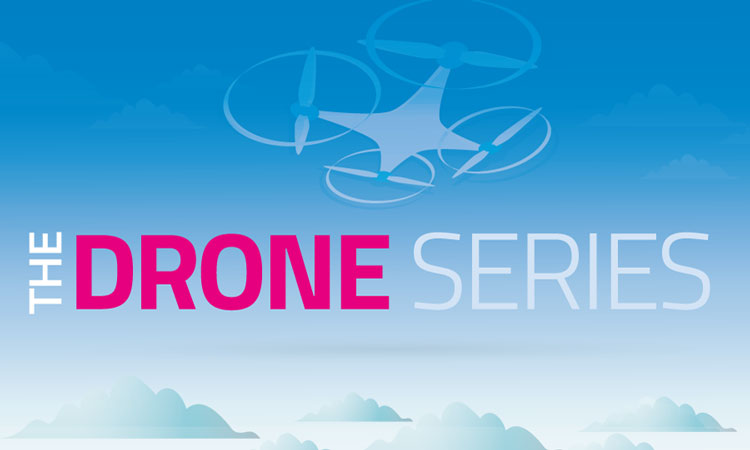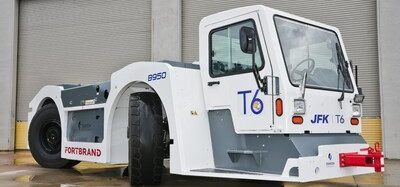Drone Series: End-to-end drone detection systems
Posted: 20 March 2019 | Lee Mansell | No comments yet
In the latest instalment of our Drone Series, Lee Mansell details how drone detection needs to adapt to the challenges we face as an industry, whilst ensuring that the good drones can do is not overlooked.


So far in these articles I have looked at current, evolving and future legislation and the technology that might be used to support enforcement of that legislation. Of course, whilst that helps with the issue of detecting drones near airports and hopefully even prosecuting the bad actors, it can lead to a number of undesirable consequences. This might include unnecessarily restricting the use of ‘friendly’ drones or even taking drastic action like closing a runway unnecessarily if a friendly drone is flying with approval, but the drone detection system isn’t told this. This is particularly relevant to airport operators as they are at the forefront of drone use for positive purposes.
Drones are rapidly becoming a standard ‘tool-of-the-trade’ for many of the functions that need to be carried out at airports. Applications include, but are definitely not limited to, bird management, building inspections, runway / taxiway inspections, surveying in support of construction projects, airframe inspections and, increasingly, as part of the layered security systems.
What does this mean?
It is clear that airports need to find ways to safely integrate drones into their day-to-day operations. Total segregation (by time and/or space) is too coarse a solution – no airline is going to thank an airport for closing a runway for an hour purely so a drone can survey the roof of an adjacent hangar for example.
What is needed is an end-to-end Unmanned Aircraft System Traffic Management System – or UTM. By ‘end-to-end’ I mean it is an entire ecosystem to support autonomously controlled operations of unmanned aerial systems (UAS) in (often) already complex and congested airspace. This means the system supports everything from initial flight planning through to dynamic change requests together with an ability to react safely and logically in the face of unplanned interventions. Many companies are working on UTM systems, often alongside various national airspace agencies. It remains to be seen if one system will triumph or if, in fact, a number of different systems (albeit all connected in some way) will co-exist.
What is common to the majority of them is the familiar ‘carrot and stick’ approach used for manned aviation airspace access. As a general principle, the more control you are prepared to cede and the more information you are prepared to share, the more airspace will be opened up to you. To take the manned aviation equivalent, if your aircraft has all the necessary equipment (which might include landing aids, conspicuity systems, collision avoidance and much more) and your crew has the appropriate training and certifications to use that equipment then the most closely controlled airspace can be made available, albeit often in return for accepting a very high degree of control from air traffic control.
For UAS a similar approach is highly likely – to be able to operate in highly regulated congested airspace, the UAS itself will need to demonstrate high levels of reliability and assurance and have technological features such as cooperative recognition and perhaps even the ability for a third-party agency to take it over. One can see how, for example, if a controller is entirely confident a friendly drone can be put into a hover or even landed in the face of an unexpected event (eg a traffic confliction occurs) then that controller will more readily accept the drone’s presence.
The impact on drone detection
This is not meant to be an examination of UTM systems – there is plenty of material available on the internet, much of it penned by those with more expertise in the matter than this author. However, what is clear is that there is an intrinsic link between UTM and drone detection.
In order for UTM to work it must incorporate some drone detection capability. This is so that we know the location of friendly/approved drones in real-time. This will be through the drone detection system having sensors that receive information sent out by the drone (IFF/ ADSB for drones? A dedicated beacon? FLARM for drones? All of these and other systems are all credible solutions). The system will also need non-cooperative sensors (radar, RF, EO/IR and so on as discussed in previous articles) so that in the event the cooperative system fails we still have situational awareness. This then also meets the requirement of the need to detect rogue drones – after all, the UTM system will quickly fall apart if unknown drones start appearing and exhibiting unpredictable behaviours.
One of the driving factors that will accelerate the need for combined UTM and drone detection is Beyond Visual Line of Sight (BVLOS) operations. The law, as it stands, requires one to keep the drone in sight and under your own control at all times (there are exemptions made for specific trials and for PFCO holders, but only under exceptional circumstances on a case by case basis). In a future where drones can fly further and with a higher degree of autonomy (including, therefore, control inputs from a UTM system) their utility and range of applications increases even further.
There is much talk in the technology media of the future of driverless cars with one common postulation being that private car ownership essentially ceases to exist and is replaced by numerous driverless vehicles (always called ‘pods’ for some reason – a personal plea, please make them less ‘podlike’!). One then uses some kind of app to book a journey and ‘the system’ (basically a UTM) works out a route and cost for you taking advantage of as much sharing and efficiency as possible. In a way a model for this already exists in the transport logistics industry where parcels and consignments route through various providers to get where they are going. A similar system for, say, delivery drones could work very well as they flit between ground stations swapping packages and charging up whilst awaiting their next tasking. Google, ‘Zipline’ (or watch the excellent TED Talk about it) to see such a system that is already up and running and delivering medical supplies in Rwanda and Ghana.
All of which means what for airports?
As previously highlighted, airports are actually early adopters of drone technology and, therefore, will need to be early adopters of UTM (and, inherently, drone detection). They already have unrivalled experience of running an integrated air operation and, far from seeing drones as a threat to that operation, will be looking for opportunities arising.
A number of companies are looking at unmanned freight aircraft; once they are big enough to need fixed runways clearly existing airports will be the obvious choice as part of the supporting infrastructure. But that is a while off yet. However, the airline industry is also an acknowledged pioneer in ‘just-in-time’ spares supply – hardly surprising as aircraft spares are generally expensive to hold in stock but when they are needed, they are needed quickly (every airline dreads an ‘AOG’ – Aircraft on Ground due to a problem).
British Airways operates a distribution centre from a 100,000ft2 bonded facility not far from Heathrow. This 24/7 facility provides parts to their own fleets but also many other airlines – often on short term loan. Whilst the facility does indeed have easy access to the M3, M4 and M25, pretty much anyone who has had cause to use those roads knows in reality that often means easy access to a long traffic jam. To be able to put the part on a drone and send it from one airport to another would be a logistical dream – a truly joined-up end-to-end UTM could facilitate this and even offers the chance of the drone bringing another part back on a return flight (or of course being tasked on another mission from its destination, it does not necessarily need to return to point A immediately). One thing that AOG aircraft have in common is that they are at airports! Just in case any reader is wondering just how useful a payload a drone could carry in terms of aviation spares, in the last six months alone a heavy-lift drone available to the market today has gone from 50kg to 150kg payload and within a few weeks will be nearing 200kg.
Conclusion
Far from needing to keep drones out, airports actually need to find ways to bring them in – safely! For that UTM is needed and an essential element of a UTM system is an effective drone detection system, for both cooperative and non-cooperative drones.
This is an area of considerable on-going research and development and a number of systems are emerging. Ideally, they will all be sufficiently open protocol (without compromising security) that they can co-exist and, indeed, interlink. That way we will likely see UTM ‘bubbles’ starting to appear around airports and, in due course, those ‘bubbles’ being linked up to give wider area UTM. Coupled with the push to BVLOS operations there is a genuine opportunity to bring together the underlying technologies to the significant benefit of the airline industry, airport operators and the multitude of other industries that rely on those transport links to do their business.
Biography
Lee was an Aerospace Battle Manager in the Royal Air Force for 20 years, finishing his military career as a Flight Commander on 54 Squadron, flying in the position of Tactical Director on the AWACS Surveillance aircraft. Since leaving the RAF Lee has worked in both military and commercial flight simulation, joining Operational Solutions (OSL) in 2015. Since then he has been part of the team building OSL’s counter drone understanding and capabilities and has worked with a range of clients including government agencies and several UK and overseas airports.
Join our free webinar: Beyond silos: How ecosystem thinking elevates the airport experience
In today’s complex aviation landscape, airports are moving beyond siloed operations to embrace a new era of collaboration. This webinar focuses on how leading airports are using ecosystem thinking to adapt, personalize, and continuously improve every touchpoint, boosting both passenger satisfaction and non-aeronautical revenue.
Date: 13 Nov | Time: 10:00 GMT
REGISTER NOW TO SECURE YOUR SPOT
Can’t attend live? No worries – register to receive the recording post-event.
Related topics
Aeronautical revenue, Air traffic control/management (ATC/ATM), Airside operations, Drones, New technologies, Safety, Security, Terminal operations


















